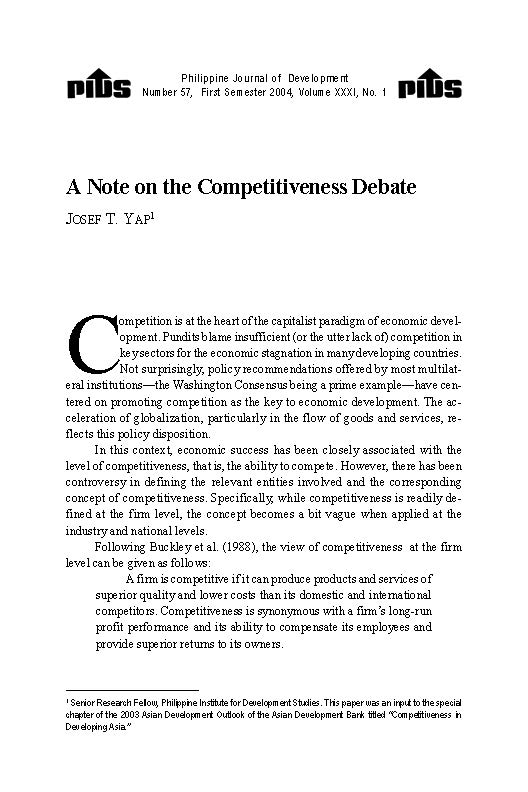Abstract
This issue presents in-depth analyses of key economic and policy challenges shaping the Philippines and Southeast Asia. One article examines the concept of competitiveness, arguing that while national competitiveness is a flawed concept, technological capability remains a crucial determinant of firm-level success. The study underscores the need for a strategic approach to foreign direct investment, drawing insights from Malaysia and Singapore. Another article explores the impact of tariff reforms on income distribution and welfare through a computable general equilibrium (CGE) model calibrated to Philippine data. By tracing the effects of tariff reductions from 1994 to 2000, the study provides insights into the channels through which trade liberalization affects households. Regulatory reforms in the electricity and downstream oil industries are also analyzed, highlighting the economic theories behind regulation, the challenges of fostering competition, and the administrative weaknesses that need to be addressed. Additionally, the long-term impact of coastal resources management (CRM) is evaluated based on fishermen households\' perspectives, offering insights into its effectiveness and constraints. Finally, an analysis of governance systems in Southeast Asia examines economic and political governance, offering policy recommendations to strengthen institutional frameworks and improve governance practices in the region.
Articles
SHARE
